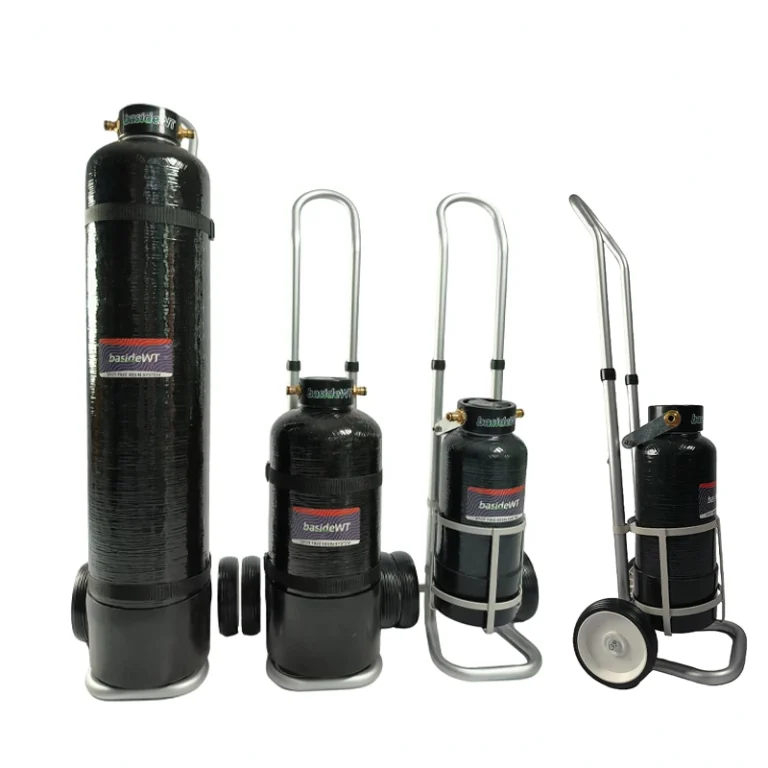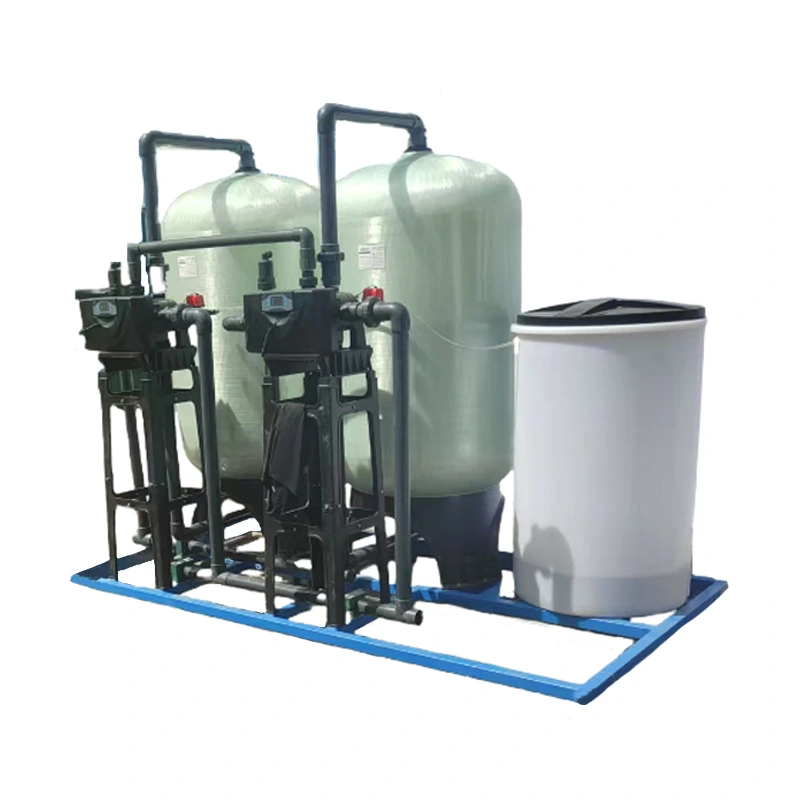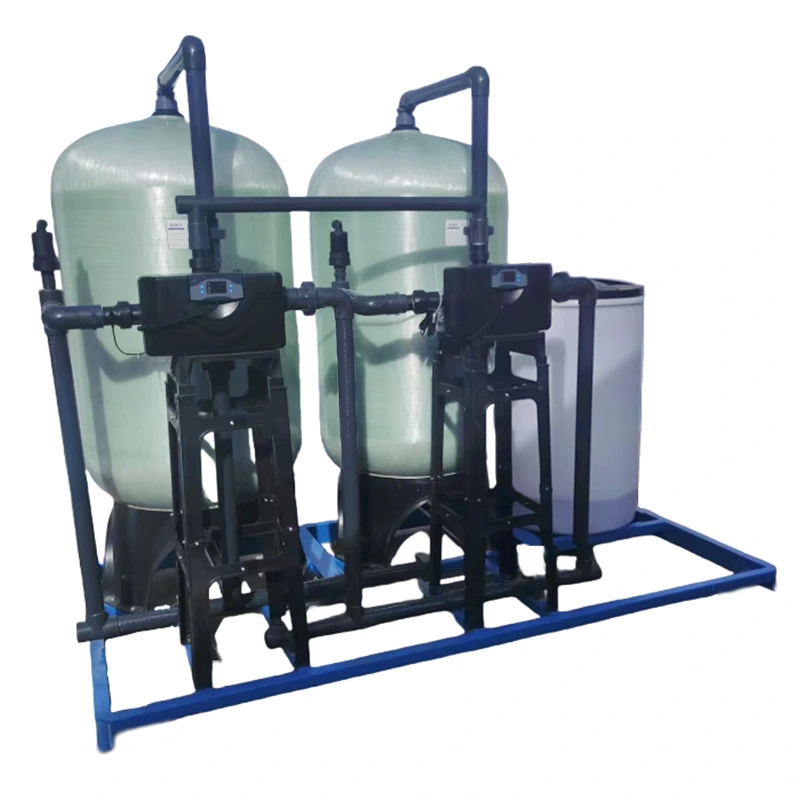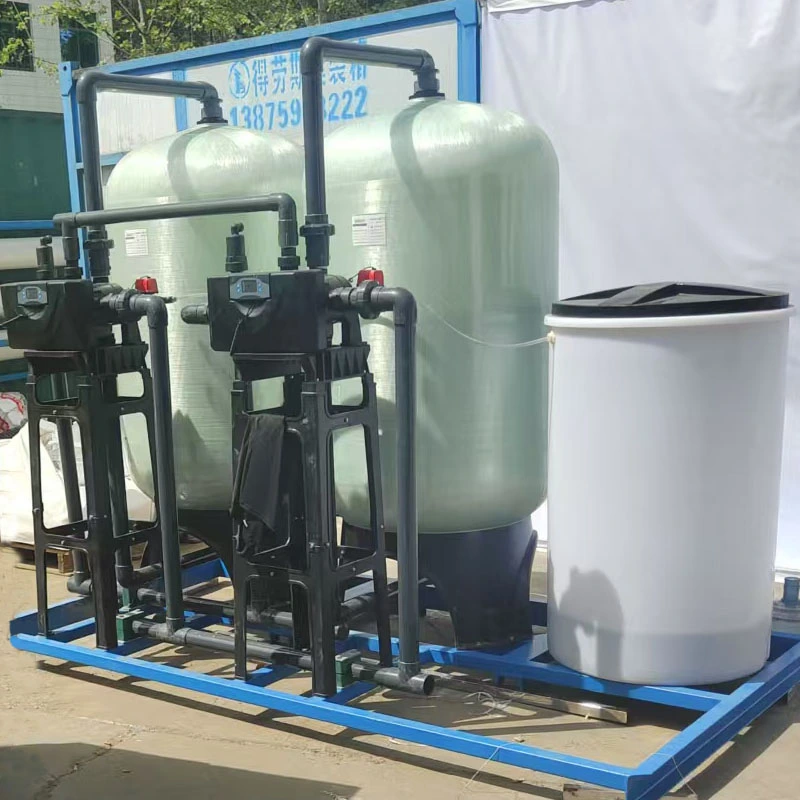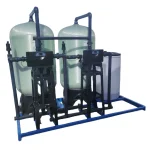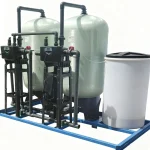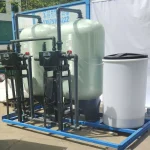BasideWT- Whole Home Water Filtration System & Replacement

10T/H Industrial Water Softening System Automatic Ion Exchange Cation Resin Water Softener
PRODUCT PARAMETERS
- Product Name: 10T/H Water Softeners
- Filter Media: Resin
- Technology: ion exchange
- Processing Type: Softening
- Function: Fully Automatic
- Type: Ion Exchange Resin Softener
- Application: Hotel, Commercial, Household
- Use: Effectively softens, reduces iron, manganese and ammonium from water
- Core Components: Pressure vessel, valve
- Raw Water: Tap Water
- Packing: Standard Exportation Package
Water hardness poses a constant challenge in many industrial processes. Minerals like calcium and magnesium accumulate. Hard water minerals form scale, which reduces operational efficiency and can lead to costly damage to expensive equipment. How can industries tackle this problem effectively? The answer is a dedicated water softening system. Specifically, a 10T/H industrial-grade water softener. This system ensures a continuous supply of soft water. It protects machinery. It cuts operational costs. Let’s explore what makes this system indispensable.
How Does a 10T/H Industrial Water Softening System Work?
An industrial water softener operates on a simple yet powerful principle: ion exchange. Hard water enters the system. It passes through a bed of cation exchange resin. This resin is charged with sodium ions. As water flows, resin beads capture calcium and magnesium ions. They release sodium ions in return. The result? Soft, scale-free water.
But what happens when the resin becomes saturated? This is where automation plays a key role. The system initiates a regeneration cycle. It uses a brine solution from the salt tank. The brine washes the resin. It flushes out hardness ions. It recharges the resin with sodium. The process is efficient. It is automatic. It requires minimal human intervention.
Key Features of an Automatic Ion Exchange Water Softener
Why choose a 10T/H softening unit? It comes packed with features designed for reliability and ease of use.
- High Flow Capacity: Handles up to 10 tons of water per hour. Perfect for large-scale applications.
- Automated Control Valve: Programs regeneration based on time or water usage. Saves salt and water.
- Durable FRP Tank: Made of fiberglass-reinforced plastic. Resists corrosion and lasts longer.
- High-Capacity Resin: Strong acid cation resin ensures efficient ion exchange.
- Brine System with Safety Float: Manages salt dosage accurately. Prevents overflows.
Moreover, the system includes a bypass valve. This allows maintenance without shutting down operations.
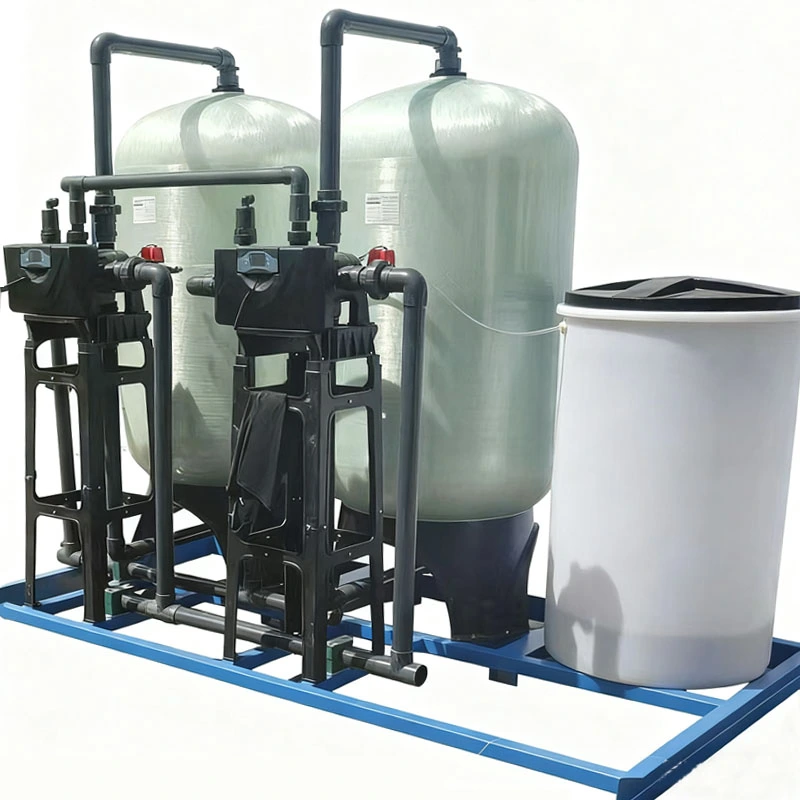
10T/H Industrial Water Softening System
Technical Specifications for a 10 T/H Industrial Water Softening System
Here are the precise answers to your questions based on standard industry design for a 10 cubic meter per hour automatic ion exchange water softener.
Q1: What is the salt consumption per regeneration?
The salt consumption is directly proportional to the amount of cation exchange resin in the vessel and the chosen regeneration level.
- Typical Resin Volume: A standard 10 T/H system contains approximately 750 liters of strong acid cation exchange resin.
- Standard Regeneration Level: The typical salt dosage is 150 – 160 grams of NaCl (sodium chloride) per liter of resin.
Calculation:
750 L × 150 g/L = 112,500 grams = 112.5 kg
Answer: The salt consumption per regeneration cycle is approximately 110 to 120 kg. Using high-purity industrial grade salt is critical to prevent resin fouling.
Q2: What is the production volume of water between two regenerations?
This is also known as the service cycle capacity. It is not a fixed number but is determined by the incoming water hardness.
- Assumed Inlet Hardness: For calculation purposes, let’s assume a common inlet hardness of 5 mmol/L (or 250 ppm as CaCO₃).
- Resin Capacity: The resin has a theoretical exchange capacity of approximately 1.0 equivalent per liter (eq/L) when regenerated at the standard salt dose mentioned above.
Calculation:
- Total resin capacity = 750 L × 1.0 eq/L = 750 equivalents
- Production volume between regenerations = Total capacity ÷ Inlet hardness
= 750 eq ÷ 5 mmol/L ÷ 1000* = 150 cubic meters
(1 equivalent = 1000 milliequivalents)*
Answer: With an inlet hardness of 5 mmol/L, the system will produce approximately 150 cubic meters of soft water between regenerations. If the inlet hardness is higher, the production volume decreases proportionally.
Q3: What is the working and nominal pressure of the softener?
These are two distinct pressure ratings:
- Working Pressure Range: This is the operational water pressure required at the inlet for the system to function correctly. The standard working pressure range is 0.2 MPa (2 bar, 29 psi) to 0.6 MPa (6 bar, 87 psi).
- Nominal Pressure (Design Pressure): This is the maximum safe pressure the vessel itself is designed to withstand. For Fiber-Reinforced Plastic (FRP) vessels, the standard nominal pressure is 0.8 MPa (8 bar, 116 psi) or 1.0 MPa (10 bar, 145 psi). The valves and piping are rated to match.
Answer: Operate the system within the 0.2 – 0.6 MPa working range. Never exceed the 0.8/1.0 MPa nominal pressure of the vessel.
Q4: What is the regeneration time duration?
The regeneration is a multi-step process. The total time is typically between 75 and 105 minutes.
Here is the breakdown of the automatic cycle:
- Backwash: 10-15 minutes. Reverses flow to lift and flush the resin bed.
- Brine Draw (Slow Rinse): 45-60 minutes. The critical phase where brine is drawn and slowly rinsed through the resin.
- Fast Rinse: 15-20 minutes. Fresh water is used to flush out any remaining brine and impurities.
- Brine Tank Refill: 5-10 minutes. Water is added to the brine tank to dissolve salt for the next cycle.
Answer: The total regeneration time duration is typically 90 minutes (±15 minutes). This process is always initiated during periods of low water demand to avoid interrupting operation.
Benefits of Using a Cation Exchange Resin Softener
The advantages of using a cation exchange softener are numerous. First, it prevents scale buildup. Scale reduces heat transfer efficiency in boilers and cooling systems. It increases energy bills. It leads to frequent repairs. By removing hardness ions, the softener eliminates this risk.
Second, it improves product quality. Industries like food, beverage, and pharmaceuticals need consistent water quality. Soft water ensures better results. It also reduces soap and detergent consumption. This cuts costs in cleaning and laundry applications.
Third, it extends equipment lifespan. Soft water reduces wear and tear on valves, pumps, and heat exchangers. This means fewer replacements. Less downtime. Higher productivity.
Applications Across Industries: Where Is It Used? 10T/H Industrial Water Softening System
This system serves a wide range of sectors, and its versatility is one of its biggest strengths.
Manufacturing: It protects cooling towers, compressors, and process lines.
Hospitality: Additionally, it provides soft water for hotels, laundries, and kitchens.
Food & Beverage: Furthermore, it ensures water purity for production and cleaning.
Pharmaceuticals: Moreover, it meets strict standards for water quality in formulations.
Power Plants: Finally, it prevents scale in boilers and cooling systems.
Each industry benefits significantly from softened water. Ultimately, it enhances operational efficiency while safeguarding infrastructure.
Technical Specifications and Performance Metrics
Understanding the technical details is crucial. Here are the key specs of a standard 10T/H system:
- Flow Rate: 10 tons/hour (37,850 liters/hour)
- Working Pressure: 0.2 – 0.6 MPa
- Resin Type: High-grade cation exchange resin
- Valve Material: Durable brass
- Tank Material: Corrosion-resistant FRP
- Brine Tank: Polyethylene with salt grid
The system features an intuitive control panel, allowing operators to easily adjust regeneration settings and closely monitor hardness levels for straightforward operation.Finally, alerts promptly notify users of low salt or system errors.
FAQs
Choosing the perfect water treatment system depends on your specific water quality, household size, and needs. We make it easy with our 3-step process:
Water quality testing – analyze your water for contaminants, hardness, and other factors.
Personalized Consultation – Our experts recommend systems based on your results, budget, and water usage.
Customized Solution – From whole-house filtration to targeted solutions (e.g., RO for drinking water, softeners for hard water), we tailor the system to your home.
To determine your water flow rate in gallons per minute (GPM), follow these simple steps:
Prepare for Testing:
- Prepare for Testing:
- Ensure all water fixtures in your home are turned off
- Select the faucet closest to your main water supply line (usually the kitchen sink or an outdoor spigot)
- Conduct the Test:
- Fully open the selected faucet
- Time how many seconds it takes to fill a 1-gallon container
- Repeat the test 2-3 times for accuracy
- Calculate Your Flow Rate:
Use this formula: Flow Rate (GPM) = 60 ÷ Fill Time (seconds)Example Calculation:- If your 1-gallon container fills in 15 seconds
- 60 ÷ 15 = 4 GPM
For more precise measurements or whole-home flow rate analysis, contact our water system specialists. We can help you determine if your current flow rate meets the requirements for any water treatment systems you’re considering.
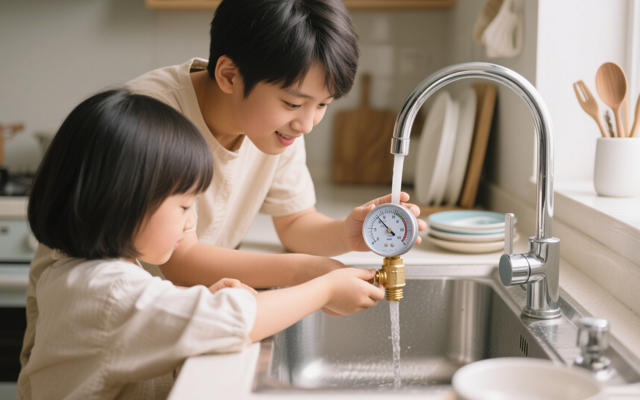
1. Check Multiple Fixtures
Test water pressure at different faucets, showers, and appliances (e.g., kitchen sink, bathroom sink, outdoor hose).
If only one fixture has low pressure, the problem is likely localized (clogged aerator, faulty valve, or pipe issue).
If all fixtures have low pressure, the issue is systemic (main supply, pressure regulator, or water heater).
2. Inspect the Aerator or Showerhead
Unscrew the faucet aerator or showerhead and check for mineral deposits, debris, or rust.
Soak it in vinegar overnight to dissolve buildup, then rinse and reattach.
3. Check the Main Shutoff Valve
Locate the main water shutoff valve (usually near the water meter or where the main line enters the house).
Ensure it’s fully open (turn clockwise to close, counterclockwise to open).
1. Activated Carbon Filters
- Removes:
✅ Chlorine & chloramines
✅ Bad tastes & odors (e.g., sulfur)
✅ Volatile Organic Compounds (VOCs)
✅ Some pesticides & herbicides
❌ Does not remove heavy metals, dissolved minerals, or microbes
2. Reverse Osmosis (RO) Systems
- Removes:
✅ Heavy metals (lead, arsenic, mercury, cadmium)
✅ Dissolved salts (fluoride, nitrates, sulfates)
✅ Microplastics & sediment
✅ Bacteria & viruses (if combined with UV)
✅ Chlorine & chemicals (with carbon pre-filter)
❌ May remove beneficial minerals (can be remineralized)
3. Water Softeners (Ion Exchange)
- Targets:
✅ Calcium & magnesium (hardness)
✅ Low levels of iron & manganese
❌ Does not remove bacteria, chlorine, or heavy metals
4. UV Purifiers
- Kills:
✅ Bacteria (E. coli, coliform)
✅ Viruses (rotavirus, hepatitis)
✅ Protozoa (Giardia, Cryptosporidium)
❌ Does not remove chemicals, metals, or sediment
5. Sediment Filters
- Removes:
✅ Sand, rust, dirt
✅ Large particles & silt
❌ Does not remove dissolved contaminants
6. Whole-House Filtration Systems
Combines multiple methods (carbon + sediment + UV) for broad protection.
- UV: Kills bacteria/viruses but doesn’t remove chemicals or particles.
- RO (Reverse Osmosis): Removes 95–99% of contaminants (heavy metals, dissolved salts) but requires electricity.
- Activated Carbon: Absorbs chlorine, odors, and organic compounds—ideal for pre-filtration.
REQUEST A QUOTE
RELATED PRODUCTS

250L/Hr Marine Water Maker for Boats | Portable Reverse Osmosis Seawater Desalinator System

Best 6 stage Under-sink RO Purifier UV Sterilization Home Reverse Osmosis Drinking Water Filter System

Industrial Commercial 1000L RO System Water Purifier Machine RO Water System Treatment Plant 1000 LPH With Pump PLC
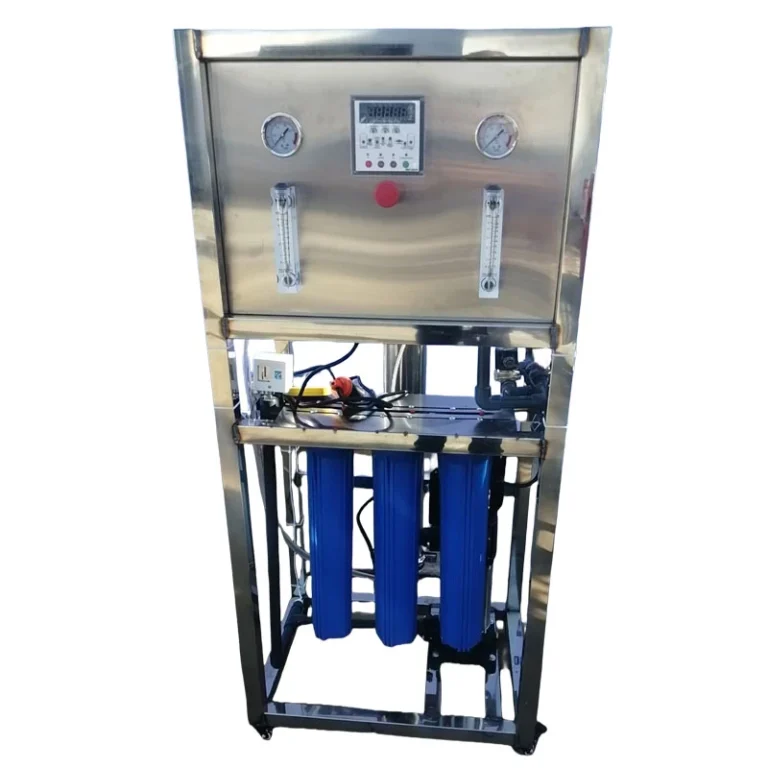
Mini Commercial RO System 250L/H | Chinese Manufacturer BasideWT
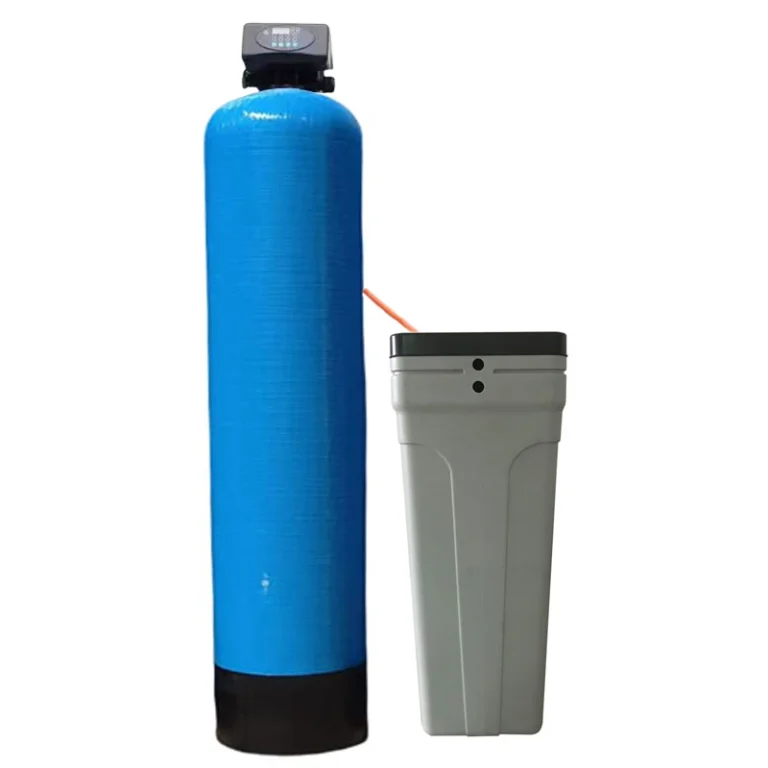
Single Column Water Softener for Iron & Hardness | Best Whole House Hard Water Filtration System
